Leeds is a large, vibrant city just 20 miles to the east of Haworth. It is home to some exceptional bars and restaurants, the world famous Leeds United football team, and Victorian shopping arcades nestling near modern malls. It is, in my opinion, the most beautiful city in the north of England, and this week I visited Leeds University’s Brotherton Library where I found some real Brontë treasure.
The Brotherton Library Special Collections room houses many old and valuable manuscripts, but there was one set in particular I was looking for: referenced ‘BC MS 19thC Brontë/07’ it is the Ellen Nussey archives. Collated inside the pages of a leather bound book are hand written letters and extracts written by Charlotte Brontë’s best friend Ellen Nussey, and they give startling insights into the Brontë sisters as a whole.
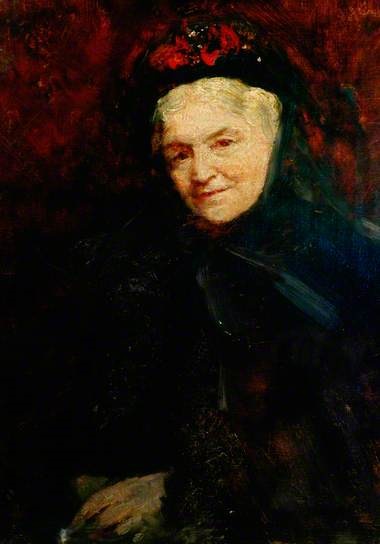
We have Ellen to thank for much of what we know about the Brontës, thanks to the hundreds of letters from Charlotte that she kept, as well as the reminiscences that she shared with early biographers including Elizabeth Gaskell and Clement King Shorter. The Brotherton archive, however, expands upon much of the information the biographers used, giving us a sometimes very different view on Anne, Emily and Charlotte. For example we find that Emily had a wicked sense of humour, Charlotte was terrified of wild animals, and Anne made a very close friend at school. Here are some extracts:
On Charlotte Bronte’s love for Constantin Heger:
‘M. Heger wasn’t proud of having made this involuntary conquest.’
On Anne Bronte’s close friendship with Ann Cook:
‘I enclose also a notice [in a letter sent to Elizabeth Gaskell] which dear C. made in a letter on the death of a young lady who was a pupil at the time Anne Brontë was at school, a pupil who attached herself to Anne B. and Anne bestowed upon her a great deal of quiet affection and genial notice. I think the young ladies friends would most probably be gratified if dear C.’s comments on her decease were inserted. They are monied and influential people in the neighbourhood, some of them not very friendly to Currer Bell‘s emanations. Would they not be won by her kindly thought of one of their own?’
On Elizabeth Gaskell’s portrait of Patrick:
‘The anecdote of the little coloured shoes produced a mental sting that no time would obliterate and I felt that all commonplace readers would fail to see the Spartan nature of the act unless you pointed it out to them, and I was intending to ask you to make very clear and distinct comments on Mr. B’s character – I do not wish anything you have said suppressed, only I think your readers will have to be taught to think kindly of Mr. B’
On Emily’s treatment of guests, and her peculiarities:
‘It used to be a matter of surprise to Charlotte that she [Emily] made an exception in my favour – she used to wish for my visits and was always kind and polite in her behaviour which was not often the case to other guests. Charlotte said she liked me because I never seemed to mark her peculiarities and I never pained her by treating her as a peculiar person.’
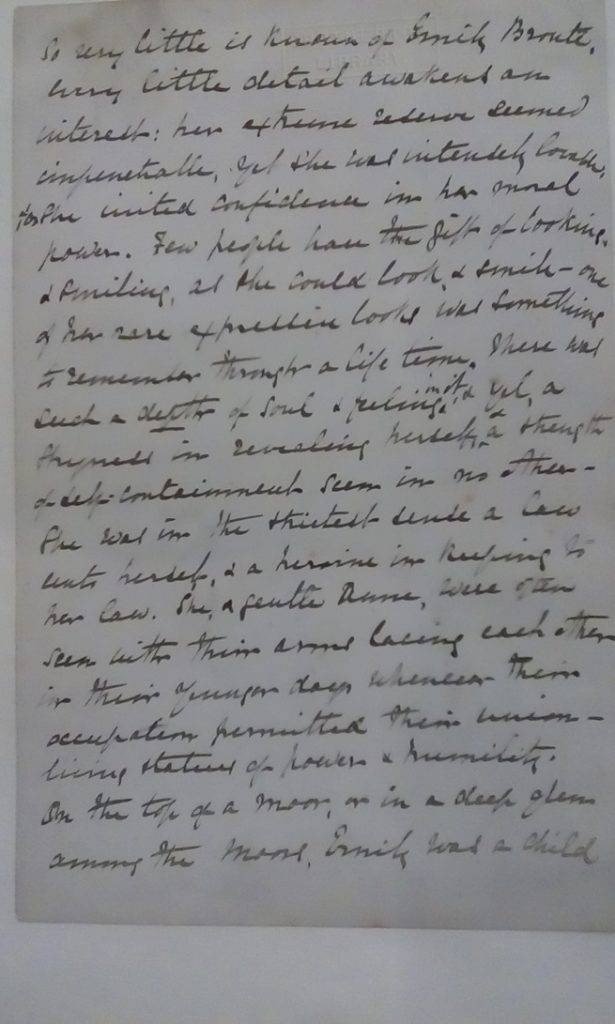
On Anne and Emily’s love for each other:
‘She and gentle Anne were often seen twined together as united statues of power and humility – they were to be seen with their arms lacing each other in their younger days whenever their occupation permitted their union.’
On Keeper’s sadness:
‘Poor old Keeper! Emily’s faithful friend and worshipper – he seemed to understand her like a human being… Keeper was a solemn mourner at Emily’s funeral and never recovered his cheerfulness.’
On Emily’s sense of humour, and teasing of Charlotte:
‘She [Emily] could be really vivacious in conversation… feeling pleasure in giving pleasure. A spell of mischief also lurked in her on occasions, when out on the moors – she enjoyed leading Charlotte where she would not dare to go of her own free will. C. had a mortal dread of unknown animals and it was Emily’s pleasure to lead her into close vicinity and then to tell her of what she had done, laughing at her horror with great amusement.’
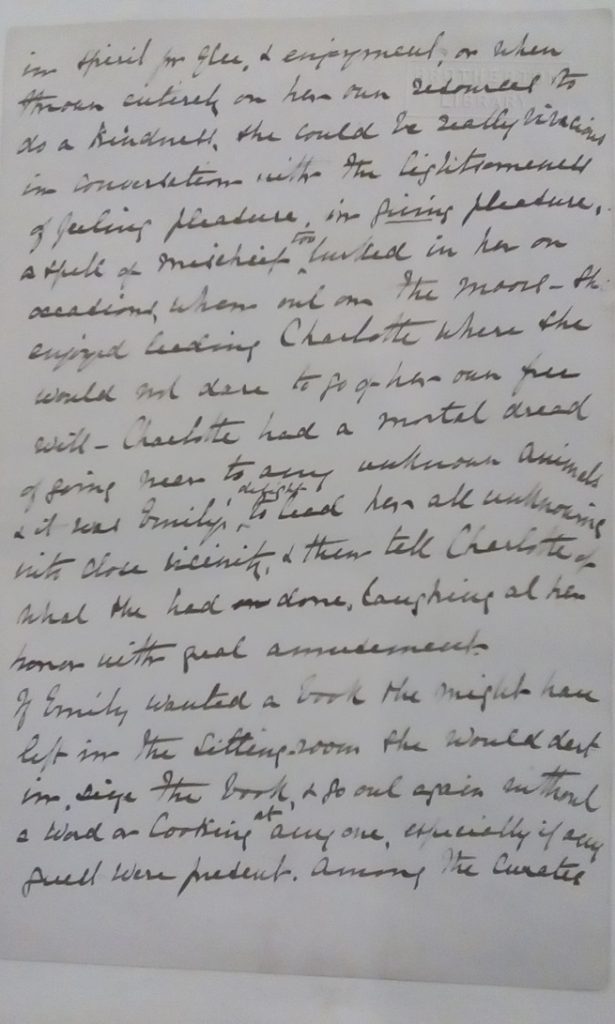
I was visiting the archive not only as a Brontë lover, but also as part of research into my biography of Emily, ‘Emily Brontë: A Life in 20 Poems’ that will be published by The History Press in 2018. It is moments like this that make all the work worthwhile. I found the archive exhilarating, but often sad and mournful too. Perhaps the saddest letter of all was one to Elizabeth Gaskell, after a proof copy of her ‘Life of Charlotte Brontë’ had been sent to Patrick Brontë and Charlotte’s widow Arthur Bell Nicholls. They believed, wrongly of course, that Ellen had been responsible for unfavourable comments about them in the book. Here, Ellen pleads with Mrs Gaskell to clear her name:
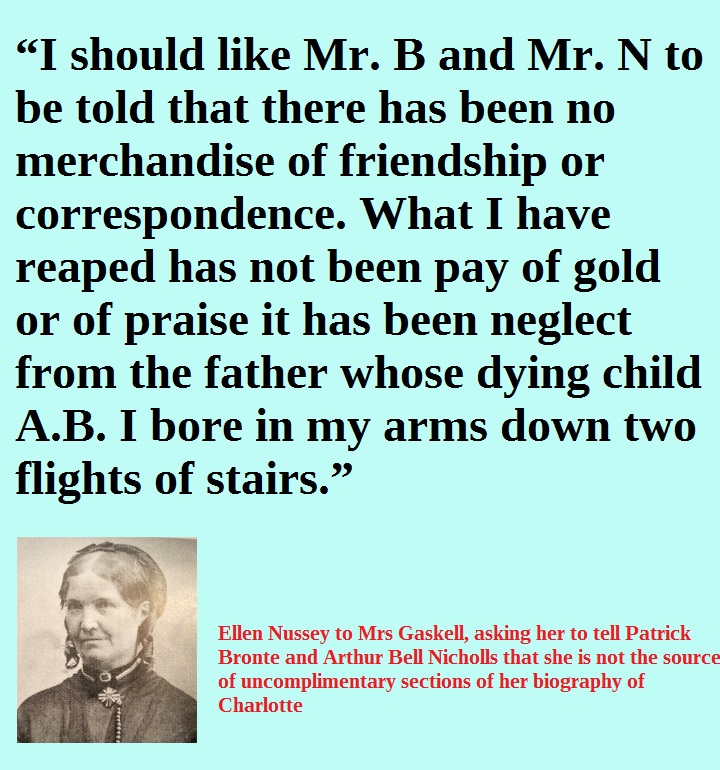
There is further rare and wonderful Brontë related material in the beautiful Brotherton Library (that’s it at the top of this post) as well; it’s open to the public and free to use, although you do have to tell them what you want to see at least two days in advance. I heartily recommend it to you all, and I came away knowing more about Anne, Emily and Charlotte, and once more filled with admiration for the kind Ellen Nussey.
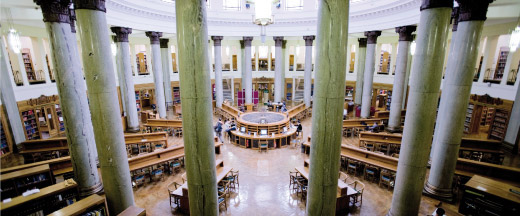
What a wonderful opportunity you had! I look forward to your book!
Thank you very much Nancy!
Great post Nick ! My husband and I were just at Leeds in May in order to research the Arthur Bell Nicholls letters there. Much of the Bronte material was originally collected by Clement K. Shorter in the 1890’s. Only the rouge Shorter and old age could bring Mr. Nicholls’s copyright and Ellen’s CB letters together! lol Both believed Shorter promised them he would give the material to museums…..didn’t quite work out that way. But luckily by that time, 1895 or so, the material was so valuable, that while it could be scattered for profit, it could not be altogether lost. It seems harder to track Martha Brown’s collection, broken up in 1880 upon her passing. Much of the Leeds material is available on line from their web site and can be read there.
Thanks Anne! Yes, I wish more museums and libraries would digitise their material and make it available online – though it’s always a thrill to see it in person!